50g
Showing 251–300 of 320 results
-

Polyacrylamide
$147.89 Add to cart View Product DetailsPolyacrylamide
-

Potassium Citrate, Monohydrate, Granular, USP
$83.46 Add to cart View Product DetailsPotassium Citrate, Monohydrate, Granular, USP
-

PSMA Fc Chimera, Human
$185.44 Add to cart View Product DetailsProstate-specific membrane antigen (PSMA) also known as Folate hydrolase 1 (FOLH1), Folylpoly-gamma-glutamate carboxypeptidase (FGCP), Glutamate carboxypeptidase 2 (GCP2), N-acetylated-alpha-linked acidic dipeptidase I (NAALAD1), is a type II membrane glycoprotein that is expressed in prostate tissue and to a lesser extent in the peripheral and central nervous system, small intestinal, and salivary gland tissues. PSMA has both folate hydrolase and N-acetylated-alpha-linked-acidic dipeptidase (NAALADase) activity and has a preference for tri-alpha-glutamate peptides. The catalytic activity of PSMA involves the release of unsubstituted C-terminal glutamyl residues, typically from Ac-Asp-Glu or folylpoly-gamma-glutamates. PSMA is used as a diagnostic and prognostic indicator of prostate cancer, and as a possible marker for various neurological disorders such as schizophrenia, Alzheimer’s disease, and Huntington’s disease.
-

PSMA, His, Human
$168.19 Add to cart View Product DetailsProstate-specific membrane antigen (PSMA) also known as Folate hydrolase 1 (FOLH1), Folylpoly-gamma-glutamate carboxypeptidase (FGCP), Glutamate carboxypeptidase 2 (GCP2), N-acetylated-alpha-linked acidic dipeptidase I (NAALAD1), is a type II membrane glycoprotein that is expressed in prostate tissue and to a lesser extent in the peripheral and central nervous system, small intestinal, and salivary gland tissues. PSMA has both folate hydrolase and N-acetylated-alpha-linked-acidic dipeptidase (NAALADase) activity and has a preference for tri-alpha-glutamate peptides. The catalytic activity of PSMA involves the release of unsubstituted C-terminal glutamyl residues, typically from Ac-Asp-Glu or folylpoly-gamma-glutamates. PSMA is used as a diagnostic and prognostic indicator of prostate cancer, and as a possible marker for various neurological disorders such as schizophrenia, Alzheimer’s disease, and Huntington’s disease.
-

Quinidine Sulfate, Dihydrate, USP
$316.37 Add to cart View Product DetailsQuinidine Sulfate, Dihydrate, USP
-

RBP4, His, Human
$155.25 Add to cart View Product DetailsThe properties of retinol binding protein is the transport carrier of vitamin A in the plasma. Human-retinol binding protein is a single-chain polypeptide with a molecular weight of approximately 21000 and one binding site for retinol and other forms of vitamin A. In addition, compounds related to retinol, such as retinal, retinoic acid, retinyl esters and geometric isomers of retinol and of retinal were evaluated for their ability to bind to this protein. In plasma, RBP4-retinol forms a complex with transthyretin (TTR), also known as thyroxine-binding protein and prealbumin. Defects in RBP4 cause retinol-binding protein deficiency, which affects night vision.
-
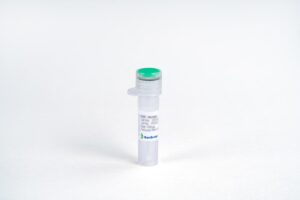
RSPO1, His, Human
$452.81 Add to cart View Product DetailsRSPO1 is a secreted protein, containing 2 FU(furin-like) repeats and 1 TSP type-1 domain and belonging to the R-spondin family. RSPO1 is required for the early development of gonads, regardless of sex. It has been found in mice only eleven days after fertilization. To induce cell proliferation, it acts synergistically with WNT4. They help stabilize β catenin, which activates downstream targets. RSPO1 is necessary in female sex development. It augments the WNT/β catenin pathway to oppose male sex development. In critical gonadal stages, between six and nine weeks after fertilization, the ovaries upregulate it while the testes downregulate it. RSPO1 can potentially aid in the treatment of mucositis, which is characterized by inflammation of the oral cavity. This unfortunate condition often accompanies chemotherapy and radiation in cancer patients with head and neck tumors.
-
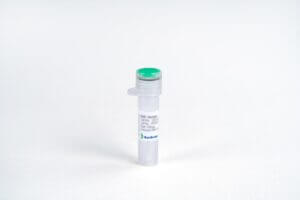
S100A1, His, Human
$392.44 Add to cart View Product DetailsS100 calcium-binding protein A1 (S100A1) is a small calcium binding protein with EF-hand structures and belongs to the S100 family. S100 proteins include at least 25 members which are located as a cluster on human chromosome 1q21. S100A1 is found in the heart, skeletal muscle, brain, and kidney.S100A1 mainly resides on the sarcoplasmic reticulum, mitochondria and myofilaments. S100A1 may function in stimulation of Ca2+ induced Ca2+ release, inhibition of microtubule assembly, and inhibition of protein kinase C-mediated phosphorylation. Reduced expression of this protein has been implicated in cardiomyopathies.
-

sCD40L, Human
$155.25 Add to cart View Product DetailsCD40 ligand, CD40L (also known as CD154, TRAP or gp39), is a 261 amino acid type II transmembrane glycoprotein belonging to the TNF family, CD40L is expressed predominantly on activated CD4+ T lymphocytes, and also found in other types of cells, like NK cells, mast cells, basophils and eosinophils. Human CD40L shares 78% amino acid identity with its mouse counterpart. The receptor of CD40L is CD40, a type I transmembrane glycoprotein belonging to the TNF receptor family. CD40 is expressed on B lymphocytes, monocytes, dendritic cells and thymic epithelium. Although all monomeric, dimeric and trimeric forms of soluble CD40L can bind to CD40, the trimeric form of soluble CD40L has the most potent biological activity through oligomerization of cell surface CD40, a common feature of TNF receptor family members. CD40L mediates a range of activities on B cells including induction of activation-associated surface antigen, entry into cell cycle, isotype switching and Ig secretion and memory generation. CD40-CD40L interaction also plays important roles in monocyte activation and dendritic cell maturation.
-

SCF, Human (P. pastoris-expressed)
$155.25 Add to cart View Product DetailsStem cell factor (also known as SCF, KIT-ligand, KL, or steel factor) is a cytokine that binds to the c-KIT receptor (CD117). SCF can exist both as a transmembrane protein and a soluble protein. It stimulates the proliferation of myeloid, erythroid, and lymphoid progenitors in bone marrow cultures and has been shown to act synergistically with colony stimulating factors. SCF plays an important role in the hematopoiesis during embryonic development. SCF can regulates HSCs in the stem cell niche in the bone marrow. SCF has been shown to increase the survival of HSCs in vitro and contributes to the self-renewal and maintenance of HSCs in-vivo.
-

SCF, Mouse
$155.25 Add to cart View Product DetailsStem cell factor (also known as SCF, KIT-ligand, KL, or steel factor) is a cytokine that binds to the c-KIT receptor (CD117). SCF can exist both as a transmembrane protein and a soluble protein. It stimulates the proliferation of myeloid, erythroid, and lymphoid progenitors in bone marrow cultures and has been shown to act synergistically with colony stimulating factors. SCF plays an important role in the hematopoiesis during embryonic development. SCF can regulates HSCs in the stem cell niche in the bone marrow. SCF has been shown to increase the survival of HSCs in vitro and contributes to the self-renewal and maintenance of HSCs in-vivo.
-

SCF, Rat (HEK 293-expressed)
$155.25 Add to cart View Product DetailsStem cell factor (also known as SCF, KIT-ligand, KL, or steel factor) is a cytokine that binds to the c-KIT receptor (CD117). SCF can exist both as a transmembrane protein and a soluble protein. It stimulates the proliferation of myeloid, erythroid, and lymphoid progenitors in bone marrow cultures and has been shown to act synergistically with colony stimulating factors. SCF plays an important role in the hematopoiesis during embryonic development. SCF can regulates HSCs in the stem cell niche in the bone marrow. SCF has been shown to increase the survival of HSCs in vitro and contributes to the self-renewal and maintenance of HSCs in-vivo.
-

Selenious Acid, Reagent
$344.23 Add to cart View Product DetailsSelenious Acid, Reagent
-

Shh (C24II), Human
$155.25 Add to cart View Product DetailsSonic Hedgehog (Shh) is a member of the Hedgehog (Hh) family of highly conserved proteins which are widely represented throughout the animal kingdom. In mammal, there are three related Hh proteins, Sonic (Shh), Desert (Dhh) and Indian (Ihh). They share a high degree of amino-acid sequence identity (e.g., Shh and Ihh are 93% identical). Sonic Hedgehog plays a role in cell growth, cell specialization, and the normal shaping (patterning) of the body. Shh is also important for development of the brain and spinal cord (central nervous system), eyes, limbs, and many other parts of the body.
-

Shh (C25II), Mouse
$155.25 Add to cart View Product DetailsSonic Hedgehog (Shh) is a member of the Hedgehog (Hh) family of highly conserved proteins which are widely represented throughout the animal kingdom. In mammal, there are three related Hh proteins, Sonic (Shh), Desert (Dhh) and Indian (Ihh). They share a high degree of amino-acid sequence identity (e.g., Shh and Ihh are 93% identical). Sonic Hedgehog plays a role in cell growth, cell specialization, and the normal shaping (patterning) of the body. Shh is also important for development of the brain and spinal cord (central nervous system), eyes, limbs, and many other parts of the body.
-
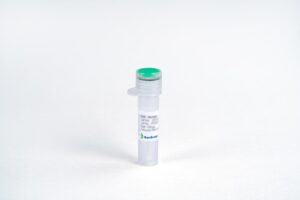
Shh, Mouse
$155.25 Add to cart View Product DetailsMembers of the Hedgehog (Hh) family are highly conserved proteins which are widely represented throughout the animal kingdom. The three known mammalian Hh proteins, Sonic (Shh), Desert (Dhh) and Indian (Ihh) are structurally related and share a high degree of amino-acid sequence identity (e.g., Shh and Ihh are 93% identical). The biologically active form of Hh molecules is obtained by autocatalytic cleavage of their precursor proteins and corresponds to approximately the N-terminal one half of the precursor molecule. Although Hh proteins have unique expression patterns and distinct biological roles within their respective regions of secretion, they use the same signaling pathway and can substitute for each other in experimental systems.
-

Siglec-10 Fc Chimera, Human
$137.14 Add to cart View Product DetailsSiglec-10 is immune system-restricted and highly expressed in peripheral blood leukocytes. Siglec-10 preferably binds to α-2,3- or α-2,6-linked sialic acid (similarity). Siglec10 is involved in the negative regulation of B cell antigen receptor signal transduction. The inhibition of B cell activation depends on PTPN6/SHP-1 (by similarity). The binding of Siglec10 to CD24 may be involved in the selective suppression of the immune response (by similarity) to risk-related molecular patterns (DAMPs) (such as HMGB1, HSP70 and HSP90). The combination of Siglec10 and CD24 may regulate the immune response of natural killer (NK) cells. Play a role in controlling autoimmunity (by similarity). In the process of initiating an adaptive immune response by CD8-α+ dendritic cells, cross-presentation is inhibited by weakening the formation of MHC class I peptide complexes. The function seems to imply the recruitment of PTPN6/SHP-1, which dephosphorylates NCF1 of the NADPH oxidase complex, thereby promoting phagosome acidification (by similarity).
-

Siglec-15 Fc Chimera, Human
$137.14 Add to cart View Product DetailsSiglec-15 preferentially recognizes the Neu5Acalpha2-6GalNAcalpha- structure. Siglec-15 associates with the activating adaptor proteins DNAX activation protein (DAP)12 and DAP10 via its lysine residue in the transmembrane domain. Siglec-15 is the second human Siglec identified to have an activating signaling potential; unlike Siglec-14, however, it does not have an inhibitory counterpart.
-

sIL-6Rα, His, Human
$194.06 Add to cart View Product DetailsInterleukin-6 Receptor (IL-6R) is a single trans-membrane protein that is the receptor for Interleukin-6 (IL-6). IL-6R forms a hexameric complex upon binding 2 molecules of IL-6 and two molecules of glycoprotein 130 (gp130) which activates intracellular JAK/STAT pathways. Although the normal form of IL-6R is the membrane-bound 80 kDa subunit, a soluble form of IL-6R (sIL-6R) can be generated physiologically by limited proteolysis or alternative splicing. sIL-6R binds to both IL-6 and gp130 generating intracellular signaling. In the immune system, sIL-6R is produced by both naïve and memory CD4 T-cells and strongly augments IL-6 ligand’s induction of Th-17 cells.
-

Sodium Cyanoborohydride
$320.08 Add to cart View Product DetailsSodium Cyanoborohydride
-

Sodium Glycocholate
$3,501.21 Add to cart View Product DetailsSodium Glycocholate
-

Sodium Hydroxide-d, 99+ Atom Percent D, 40 Percent (w/w) solution in D2O
$391.79 Add to cart View Product DetailsSodium Hydroxide-d, 99+ Atom Percent D, 40 Percent (w/w) solution in D2O
-

Sodium Lauroyl Sarcosine
$103.71 Add to cart View Product DetailsSodium Lauroyl Sarcosine
-

SP-D, Human
$116.44 Add to cart View Product DetailsSurfactant protein D is a member of the collectin family of innate immune modulators. It is constitutively secreted by alveolar lining cells and epithelium associated with tubular structures, that contains a N-terminal collagen-like domain and a C-terminal lectin domain that are characteristic of members of the collectin family of proteins, and also shows calcium-dependent binding to specific saccharides. Besides it is involved in the development of acute and chronic inflammation of the lung. Several human lung diseases are characterized by decreased levels of bronchoalveolar SP-D.
-
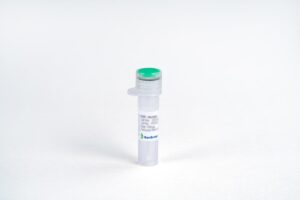
SPARC, Human
$155.25 Add to cart View Product DetailsSPARC, an acronym for ’secreted protein, acidic and rich in cysteine’, is also known as osteonectin or BM-40. It is the founding member of a family of secreted matricellular proteins with similar domain structure. The 303 amino acid , 43 kDa protein contains a 17 aa signal sequence, an N-terminal acidic region that binds calcium, a follistatin domain containing Kazal-like sequences, and a C-terminal extracellular calcium (EC) binding domain with two EF-hand motifs. SPARC is produced by fibroblasts, capillary endothelial cells, platelets and macrophages, especially in areas of tissue morphogenesis and remodeling. SPARC shows context-specific effects, but generally inhibits adhesion, spreading and proliferation, and promotes collagen matrix formation. For endothelial cells, SPARC disrupts focal adhesions and binds and sequesters PDGF and VEGF. SPARC is abundantly expressed in bone, where it promotes osteoblast differentiation and inhibits adipogenesis.
-

Stevioside
$1,173.68 Add to cart View Product DetailsStevioside
-

Sudan Red 7B
$384.55 Add to cart View Product DetailsSudan Red 7B
-
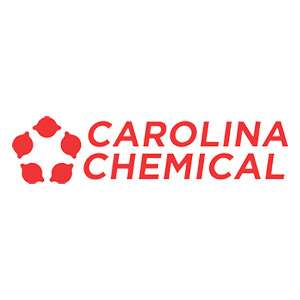
Tadalafil Powder – 50G
$77.28 Add to cart View Product DetailsCAS Number 171596-29-5 Molecular Weight 389.40Molecular Formula C22H19N3O4 -

TGF-α, Human
$94.88 Add to cart View Product DetailsTransforming Growth Factor-alpha (TGF-α) , also known as sarcoma growth factor, TGF-type I and ETGF, is a member of the EGF family of cytokines. It is expressed in monocytes, brain cells, keratinocytes and various tumor cells. TGF-α signals through EGFR and acts synergistically with TGF-beta to promote the proliferation of a wide range of epidermal and epithelial cells. TGF-α is a transforming growth factor that is a ligand for the epidermal growth factor receptor, which activates a signaling pathway for cell proliferation, differentiation and development. This protein may act as either a transmembrane-bound ligand or a soluble ligand. The biological actions of TGF-α and EGF are similar. For instance, TGF-α and EGF bind to the same receptor. When TGF-α binds to EGFR it can initiate multiple cell proliferation events.
-

TGF-β 1, Mouse
$543.38 Add to cart View Product DetailsTransforming growth factor beta 1 (TGFβ1) is the prototype of a growing superfamily of peptide growth factors and plays a prominent role in a variety of cellular processes, including cell-cycle progression, cell differentiation, reproductive function, development, motility, adhesion, neuronal growth, bone morphogenesis, wound healing, and immune surveillance. TGF-β1, TGF-β2 and TGF-β3 signal via the same heteromeric receptor complex, consisting of a ligand binding TGF-β receptor type II (TβR-II), and a TGF-β receptor type I (TβR-I). Signal transduction from the receptor to the nucleus is mediated via SMADs. TGF-β expression is found in cartilage, bone, teeth, muscle, heart, blood vessels, hematopoietic cells, lung, kidney, gut, liver, eye, ear, skin, and the nervous system.
-

TGF-β 2, Human
$543.38 Add to cart View Product DetailsTransforming growth factor beta-2 (TGF-β2) is a secreted protein which belongs to the TGF-beta family. It is known as a cytokine that performs many cellular functions and has a vital role during embryonic development. The precursor is cleaved into mature TGF-beta-2 and LAP, which remains non-covalently linked to mature TGF-beta-2 rendering it inactive. It is an extracellular glycosylated protein. It is known to suppress the effects of interleukin dependent T-cell tumors. Defects in TGFB2 may be a cause of non-syndromic aortic disease (NSAD).
-

TGF-β 2, Mouse
$543.38 Add to cart View Product DetailsTransforming growth factor beta 2 (TGF-β2) is a member of TGF-beta superfamily that shares a characteristic cysteine knot structure. Mice with TGF-β2 gene deletion show defects in development of cardiac, lung, craniofacial, limb, spinal column, eye, inner ear and urogenital systems. All TGF-β isoforms signal via the same heteromeric receptor complex, consisting of a ligand binding TGF-β receptor type II (TβR-II), and a TGF-β receptor type I (TβR-I). Signal transduction from the receptor to the nucleus is mediated via SMADs. TGF-β expression is found in cartilage, bone, teeth, muscle, heart, blood vessels, hematopoietic cells, lung, kidney, gut, liver, eye, ear, skin, and the nervous system.
-

TGF-β 3, Human
$543.38 Add to cart View Product DetailsTransforming growth factor beta 3(TGFB3) is a member of a TGF -β superfamily which is defined by their structural and functional similarities. TGFB3 is secreted as a complex with LAP. This latent form of TGFB3 becomes active upon cleavage by plasmin, matrix metalloproteases, thrombospondin -1, and a subset of integrins. It binds with high affinity to TGF- β RII, a type II serine/threonine kinase receptor. TGFB3 is involved in cell differentiation, embryogenesis and development. It is believed to regulate molecules involved in cellular adhesion and extracellular matrix (ECM) formation during the process of palate development. Without TGF-β3, mammals develop a deformity known as a cleft palate.
-
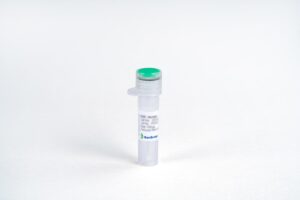
TGF-β1, Human
$370.88 Add to cart View Product DetailsTGF-β1 (transforming growth factor beta 1) is one of three closely related mammalian members of the large TGF-β1 superfamily that share a characteristic cystine knot structure. TGF-β1, -2 and -3 are highly pleiotropic cytokines that act as cellular switches to regulate processes such as immune function, proliferation and epithelial-mesenchymal transition. Each TGF-β isoform has some non-redundant function; for TGF-β1, mice with targeted deletion show defects in hematopoiesis and endothelial differentiation and died of overwhelming inflammation. TGF-β1 signaling begins with high-affinity binding to a type II ser/thr kinase receptor termed TGF-β RII. This receptor then phosphorylates and activates a second ser/thr kinase receptor, TGF-β RI (also called activin receptor‑like kinase (ALK)-5), or alternatively, ALK-1. This complex phosphorylates and activates Smad proteins that regulate transcription.
-

Thallium (I) Nitrate
$377.07 Add to cart View Product DetailsThallium (I) Nitrate
-

TIGIT, His, Human
$137.14 Add to cart View Product DetailsT cell immunoreceptor with Ig and ITIM domains (TIGIT) is an immune receptor present on some T cells and natural killer cells (NK). This protein could bind to CD155 (PVR) with high affinity, which causes increased secretion of IL-10 and decreased secretion of IL-12B and suppresses T-cell activation by promoting the generation of mature immunoregulatory dendritic cells. TIGIT could also bind to CD112 (PVRL2) with lower affinity. TIGIT’s inhibition of NK cytotoxicity can be blocked by antibodies against its interaction with PVR and the activity is directed through its ITIM domain.
-

TIM-3 Fc Chimera, Human
$237.19 Add to cart View Product DetailsT cell Ig- and mucin-domain-containing molecules (TIMs) are a family of transmembrane proteins expressed by various immune cells. TIM-3 is an inhibitory molecule that is induced following T cell activation. TIM-3 is expressed by exhausted T cells in the settings of chronic infection and cancer, and tumor-infiltrating T cells that co-express PD-1 and TIM-3 exhibit the most severe exhausted phenotype. Tumor-infiltrating dendritic cells also express TIM-3. TIM-3 expression on DCs was found to suppress innate immunity by reducing the immunogenicity of nucleic acids released by dying tumor cells. Research studies show that heterodimerization of TIM-3 with CEACAM-1 is critical for the inhibitory function of TIM-3, and co-blockade of TIM-3 and CEACAM-1 enhanced antitumor responses in a mouse model of colorectal cancer. Its binding to Galectin-9 induces a range of immunosuppressive functions which enhance immune tolerance and inhibit anti-tumor immunity. TIM-3 ligation attenuates CD8+ and Th1 cell responses and promotes the activity of Treg and myeloid derived suppressor cells. In addition, dendritic cell-expressed TIM-3 dampens inflammation by enabling the phagocytosis of apoptotic cells and the cross-presentation of apoptotic cell antigens.
-

Titanium (III) Oxide, -100 Mesh
$678.24 Add to cart View Product DetailsTitanium (III) Oxide, -100 Mesh
-

TNF R I, Human
$155.25 Add to cart View Product DetailsTNF Receptor Type I, is also known as TNF R-p55/p60 and TNFRSF1A. It is a type I transmembrane protein member of the TNF receptor superfamily. It is expressed in most cell types. Binding of either TNF-α or TNF-β to TNF-R1 initiates a signal transduction pathway that results in the activation of the transcription factor NF-κB, whose target genes are involved in the regulation of inflammatory responses, and, in certain cells, induce apoptosis. TNF-R1 is essential for proper development of lymph node germinal centers and Peyer’s patches and for combating intracellular pathogens such as Listeria. It is stored in the Golgi and translocates to the cell surface following proinflammatory stimuli.
-

TNF-α (80-235aa), Mouse
$99.19 Add to cart View Product DetailsTumor Necrosis Factor-Alpha (TNF-alpha) plays a major role in growth regulation, differentiation, inflammation, viral replication, tumorigenesis, and autoimmune disease. Besides inducing hemorrhagic necrosis of tumors, TNF has been found to be involved in tumorigenesis, tumor metastasis, viral replication, septic shock, fever, inflammation, and autoimmune diseasesuch as Crohn’s disease, rheumatoid arthritis and graft-versus-host disease. TNF alpha-1a is a potent lymphoid factor that exerts cytotoxic effects on a wide range of tumor cells and certain other target cells.
-

TNF-α, Bovine
$155.25 Add to cart View Product DetailsTumor Necrosis Factor-Alpha (TNF-α) plays a major role in regulating growth, differentiation, inflammation, viral replication, tumorigenesis, and autoimmune diseases. TNF alpha-1a is a potent lymphoid factor that exerts cytotoxic effects on a wide range of tumor cells. In addition to inducing hemorrhagic necrosis of tumors, studies indicate TNF is involved in tumor igenesis, tumor metastasis, viral replication, septic shock, fever, inflammation, Crohn’s disease, rheumatoid arthritis and graft-versus-host disease.
-

TNF-α, His, Human
$94.88 Add to cart View Product DetailsTumor Necrosis Factor-Alpha (TNF-alpha) plays a major role in growth regulation, differentiation, inflammation, viral replication, tumorigenesis, and autoimmune diseases. Besides inducing hemorrhagic necrosis of tumors, TNF has been found to be involved in tumorigenesis, tumor metastasis, viral replication, septic shock, fever, inflammation, and autoimmune diseases including Crohn’s disease, and rheumatoid arthritis as well as graft-versus-host disease. TNF alpha-1a is a potent lymphoid factor that exerts cytotoxic effects on a wide range of tumor cells and certain other target cells.
-

TNF-α, Human
$90.56 Add to cart View Product DetailsTumor Necrosis Factor-alpha (TNF-a) is a homotrimer with a subunit molecular mass of 17.3 kDa. Tumor Necrosis Factor-alpha(TNF-a) plays a major role in growth regulation, differentiation, inflammation, viral replication, tumorigenesis, and autoimmune diseases; and in viral, bacterial, fungal, and parasitic infections. Besides inducing hemorrhagic necrosis of tumors, TNF has been found to be involved in tumorigenesis, tumor metastasis, viral replication, septic shock, fever, inflammation, and autoimmune diseases including Crohn’s disease, and rheumatoid arthritis as well as graft-versus-host disease.
-

TNF-α, Human (P. pastoris-expressed)
$94.88 Add to cart View Product DetailsTumor Necrosis Factor-Alpha (TNF-alpha) plays a major role in growth regulation, differentiation, inflammation, viral replication, tumorigenesis, and autoimmune diseases. Besides inducing hemorrhagic necrosis of tumors, TNF has been found to be involved in tumorigenesis, tumor metastasis, viral replication, septic shock, fever, inflammation, and autoimmune diseases including Crohn’s disease, and rheumatoid arthritis as well as graft-versus-host disease. TNF alpha-1a is a potent lymphoid factor that exerts cytotoxic effects on a wide range of tumor cells and certain other target cells.
-
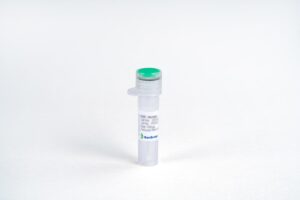
TNF-α, Porcine
$90.56 Add to cart View Product DetailsTumor Necrosis Factor-Alpha (TNF-alpha) plays a major role in growth regulation, differentiation, inflammation, viral replication, tumorigenesis, and autoimmune disease. Besides inducing hemorrhagic necrosis of tumors, TNF has been found to be involved in tumorigenesis, tumor metastasis, viral replication, septic shock, fever, inflammation, and autoimmune disease including Crohn’s disease, rheumatoid arthritis and graft-versus-host disease. TNF alpha-1a is a potent lymphoid factor that exerts cytotoxic effects on a wide range of tumor cells and certain other target cells.
-

TNF-α, Rat
$133.69 Add to cart View Product DetailsTumor Necrosis Factor-Alpha (TNF-alpha) plays a major role in growth regulation, differentiation, inflammation, viral replication, tumorigenesis, and autoimmune disease. Besides inducing hemorrhagic necrosis of tumors, TNF has been found to be involved in tumorigenesis, tumor metastasis, viral replication, septic shock, fever, inflammation, and autoimmune disease including Crohn’s disease, rheumatoid arthritis and graft-versus-host disease. TNF alpha-1a is a potent lymphoid factor that exerts cytotoxic effects on a wide range of tumor cells and certain other target cells.
-

TNF-β, Human
$155.25 Add to cart View Product DetailsTNF is secreted by macrophages, monocytes, neutrophils, T-cells, NK-cells following their stimulation by bacterial LPS. Cells expressing CD4 secrete TNF-alpha while CD8 cells secrete little or no TNF-alpha. The synthesis of TNF-alpha is induced by many different stimuli including interferons, IL2, GM-CSF. TNF-β is a potent mediator of inflammatory and immune responses. It belongs to the TNF family of ligands, and signals through TNFR1 and TNFR2. TNF-β is produced by activated T and B lymphocytes, and has similar activities to TNF-α. It mediates a large variety of inflammatory, immunostimulatory, and antiviral responses.
-

Tobramycin Sulfate, USP
$907.99 Add to cart View Product DetailsTobramycin Sulfate, USP
-

Toluidine Blue O
$291.78 Add to cart View Product DetailsToluidine Blue O
-

TPO, His, Human
$543.38 Add to cart View Product DetailsThrombopoietin (TPO) is a glycoprotein hormone which belongs to the EPO/TPO family. It produced by the liver and kidney which regulates the production of platelets. TPO stimulates the production and differentiation of megakaryocytes, the bone marrow cells that bud off large numbers of platelets. Lineage-specific cytokine affects the proliferation and maturation of megakaryocytes from their committed progenitor cells. It acts at a late stage of megakaryocyte development. It may be the major physiological regulator of circulating platelets.






